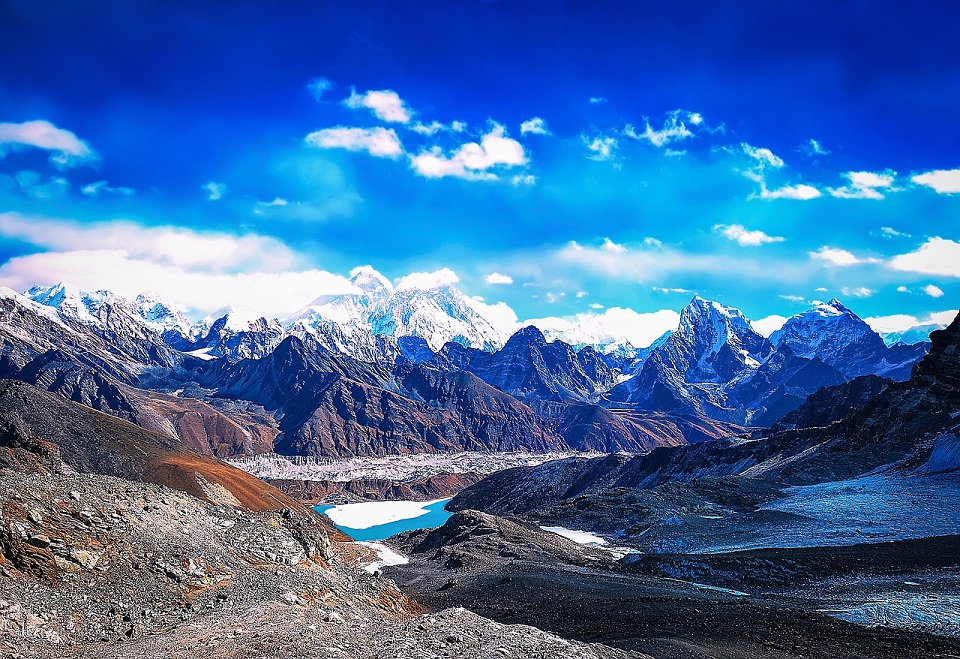Physical Address
304 North Cardinal St.
Dorchester Center, MA 02124
Physical Address
304 North Cardinal St.
Dorchester Center, MA 02124
Your guide to extraordinary adventures around the globe.
Your guide to extraordinary adventures around the globe.

Situated in the mighty Himalayas of Nepal, Everest Base Camp attracts adventurous trekkers from around the globe eager to embark on the journey of a lifetime to the foot of the world’s highest peak. As an experienced trekker and travel blogger, I’m providing this comprehensive guide on how to trek to Everest Base Camp including a detailed itinerary, packing list, and tips to make the most of this once-in-a-lifetime adventure.
The most popular and traditional Everest trekking route begins with a short flight from Kathmandu to Lukla at 2,800 m, the starting point of your expedition. From here, you will steadily make your way higher through the Khumbu Valley towards Everest Base Camp at 5,364 m over 10-15 days, stopping overnight in local teahouses or camping in tents. Highlights along the way include:
The trek begins by flying into the small village of Lukla (9,383 ft) where the trail starts with a steep uphill climb towards Namche Bazaar. Spend a couple days here acclimatizing to the altitude and exploring local villages before setting off.
The bustling Sherpa capital of Namche Bazaar (11,286 ft) has colorful markets, restaurants, and lodges to rest in. Use your time here wisely to adapt to the elevation gain and get your trekking legs ready for the days ahead. Soak in the unbelievable views of surrounding peaks like Thamserku.
After several days on the trail, you’ll arrive at the famous Tengboche Monastery (12,687 ft), one of the largest in the Khumbu region. It’s an ideal place to spend a night and admire the panoramic views of Ama Dablam, Everest, and other Himalayan giants. Don’t miss witnessing the monks chanting their prayers in the main temple.
Further along at 14,800 ft is the village of Dingboche, surrounded by towering peaks and crystal clear views of Lhotse and Island Peak. Hiking at this altitude is strenuous but it’s worth spending a night to acclimate before continuing higher up the valley.
Just shy of 16,000 ft, Lobuche is one of the last stopovers before Everest Base Camp. Enjoy views of Kala Patthar and Pumori before a short hike to Gorak Shep. Be prepared for very cold nighttime temperatures here!
After nearly 2 weeks of hiking, you’ll finally reach the main destination – Everest Base Camp (17,600 ft)! Gaze up in awe at the Khumbu Icefall and soak in the surrounding glaciers and ice pinnacles. You made it! Spend time here admiring Everest before heading back down the valley.
Make the early morning trek to Kala Patthar (18,500 ft) for absolutely jaw-dropping 180 degree views of Everest, Nuptse, Pumori and Ama Dablam. This viewpoint is the perfect way to bid farewell to the Himalayas before descending to lower altitudes.
While trekking, you will cross high passes like Cho La Pass (5,380 m) and Kala Patthar (5,555 m) for stunning views. The return journey follows the same route back to Lukla where you will catch your return flight to Kathmandu.
The two-week trek delivers nonstop views of the world’s most dramatic peaks. You’ll traverse rugged terrain including glaciers, icefalls, moraines, and sweeping valleys surrounded by towering giants like Everest, Lhotse, Pumori, Ama Dablam, and Nuptse. Alpine forests, rhododendron blooms, high passes, Buddhist prayer flags, and sheer mammoth peaks create scene after jaw-dropping scene.
Encounter the warm hospitality of the Sherpa people who have lived in the Khumbu Valley for centuries. Visit ancient monasteries like Tengboche Monastery and centuries-old Buddhist stupas. Spend nights in local teahouses, interact with your guide, and glean insights into the spiritual significance of Everest to these mountain communities.
The EBC trek is a strenuous, mentally and physically demanding journey that requires fitness, determination, and altitude acclimatization. Yet overcoming challenges is profoundly rewarding. You will form life-long bonds with fellow trekkers and guides, achieve a daunting goal, and gain a deep sense of accomplishment. The views and spiritual experience are well worth the efforts required.
Work strictly with experienced guides who monitor your health, pace, and altitude sickness signs. Take time to properly acclimate by ascending gradually and incorporating rest days. Obtain permits and trekking insurance. Carry protective gear like sunglasses, first aid kits, oxygen canisters, and extra food/water. Check weather daily and avoid hazardous conditions. Listen to your body – don’t push excessively hard.
The main trekking season is in the Spring (March to May) and Autumn (October to November) when the weather tends to be clear and mild. During the sunny summer monsoon from June to August, trails can be very wet and cloudy obscuring views. Winters are too cold and risky for Everest treks due to high winds and snowfall.
Trekking to Everest Base Camp was easily one of the most memorable experiences of my life. The fierce beauty of the mountains, bonds forged with fellow adventurers, and sense of achievement upon completing such a difficult trek are second to none. If you have the chance to take on this adventure, do it! Just be sure to train beforehand and listen to your body while hiking at high altitude. You’ll come home with a new perspective and stories that will last a lifetime.